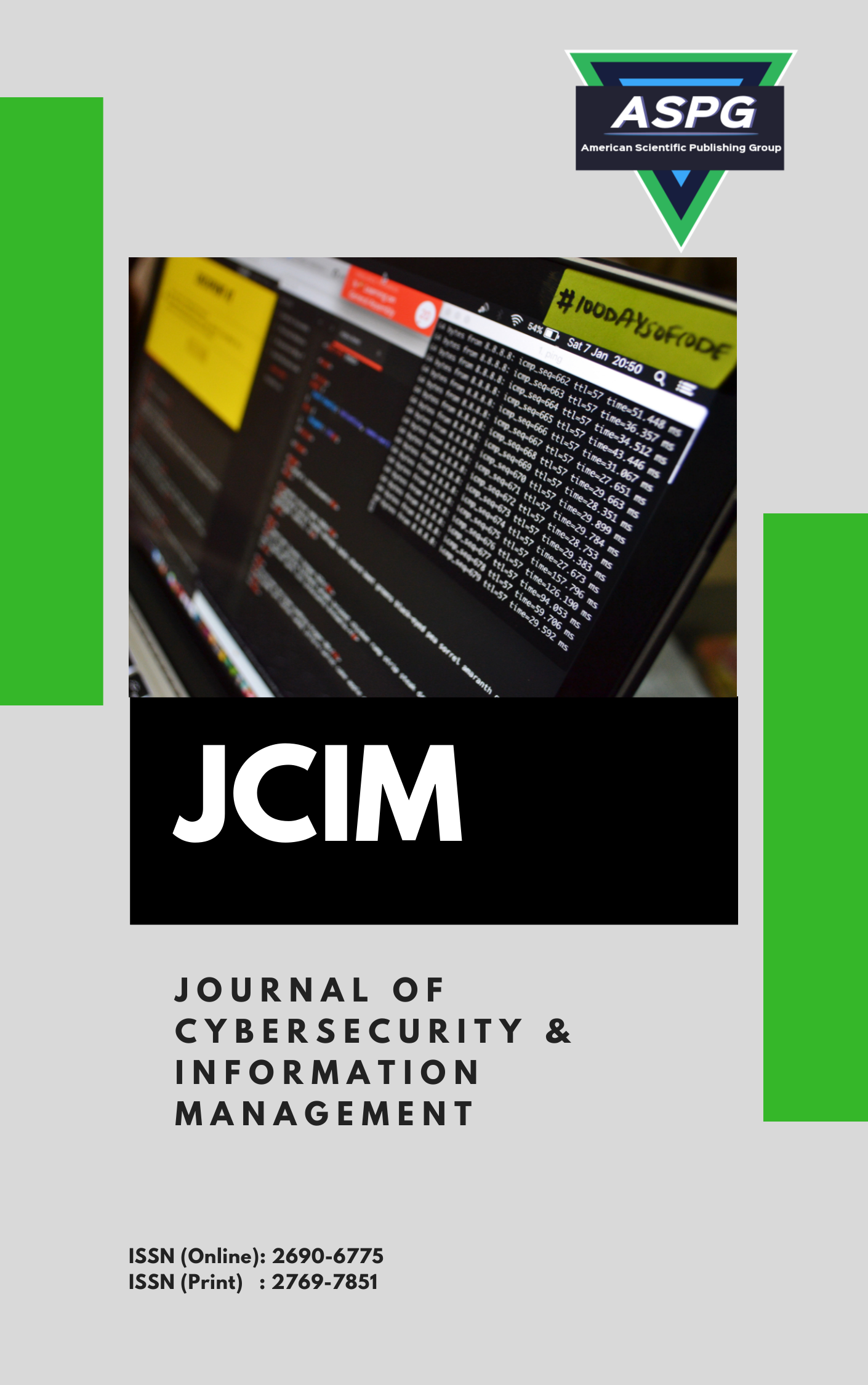

Volume 16 , Issue 1 , PP: 231-242, 2025 | Cite this article as | XML | Html | PDF | Full Length Article
Shahlaa Mashhadani 1 , Rajaa Mrayeh Mohammed 2 , Nishtha Jatana 3 , Charu Gupta 4 , Oday Ali Hassen 5 * , Shweta Jindal 6
Doi: https://doi.org/10.54216/JCIM.160116
A resume is the first impression between you and a potential employer. Therefore, the importance of a resume can never be underestimated. Selecting the right candidates for a job within a company can be a daunting task for recruiters when they have to review hundreds of resumes. To reduce time and effort, we can use NLTK and Natural Language Processing (NLP) techniques to extract essential data from a resume. NLTK is a free, open source, community-driven project and the leading platform for building Python programs to work with human language data. To select the best resume according to the company’s requirements, an algorithm such as KNN is used. To be selected from hundreds of resumes, your resume must be one of the best. Therefore, our work also focuses on creating an automated system that can recommend the right skills and courses to help the desired candidates by using Natural Language Processing to analyze writing style (linguistic fingerprints) and also used to measure style and analyze word frequency from the submitted resume. Through semantic search and relying on individual resumes, forensic experts can query the huge semantic datasets provided to companies and institutions and facilitate the work of government forensics by obtaining official institutional databases. With global cybercrime and the increase in applicants seeking work and leveraging their multilingual data, Natural Language Processing (NLP) is making it easier. Through the important relationship between Natural Language Processing (NLP) and digital forensics, NLP techniques are increasingly being used to enhance investigations involving digital evidence and leverage the support of NLP for open-source data by analyzing massive amounts of public data.
Resume Parser , NLP Natural Language Processing , KNN , Course and Skill Recommendation , NLTK Natural Language Toolkit , Digital Forensic
[1] P. K. Roy, S. S. Chowdhary, and R. Bhatia, "A machine learning approach for automation of resume recommendation system," Procedia Comput. Sci., vol. 167, pp. 2318–2327, 2020.
[2] S. Amin, N. Jayakar, S. Sunny, P. Babu, M. Kiruthika, and A. Gurjar, "Web application for screening resume," in Proc. Int. Conf. Nascent Technol. Eng. (ICNTE), 2019.
[3] J. L. Howard and G. R. Ferris, "The employment interview context: Social and situational influences on interviewer decisions," J. Appl. Soc. Psychol., vol. 26, no. 2, pp. 112–136, 2020.
[4] K. Tejaswini, V. Umadevi, S. M. Kadiwal, and S. Revanna, "Design and development of machine learning-based resume ranking system," Global Transitions Proc., 2022.
[5] S. Jabri, A. Dahbi, T. Gadi, and A. Bassir, "Ranking of text documents using TF-IDF weighting and association rules mining," in Proc. 4th Int. Conf. Optimization Appl. (ICOA), 2018.
[6] E. M. S. "Differential hiring using a combination of NER and word embedding," Int. J. Recent Technol. Eng. (IJRTE), vol. 9, pp. 1344–1349, 2020.
[7] S. T. Gopalakrishna and V. Vijayaraghavan, "Automated tool for resume classification using semantic analysis," Int. J. Artif. Intell. Appl., vol. 10, pp. 1–4, 2020.
[8] R. V., R. T. Fareed, and S. Kaganurmath, "Resume classification and ranking using KNN and cosine similarity," Int. J. Eng. Res. Technol. (IJERT), vol. 10, no. 8, 2021.
[9] S. Chen, Y. Zhang, and Q. Yang, "Multi-task learning in natural language processing: An overview," ACM Comput. Surv., vol. 56, no. 12, pp. 1–32, 2024.
[10] A. F. Neamah, et al., "Big data clustering using chemical reaction optimization technique: A computational symmetry paradigm for location-aware decision support in geospatial query processing," Symmetry, vol. 14, no. 12, p. 2637, 2022.
[11] H. Zheng, K. Xu, H. Zhou, Y. Wang, and G. Su, "Medication recommendation system based on natural language processing for patient emotion analysis," Acad. J. Sci. Technol., vol. 10, no. 1, pp. 62–68, 2024.
[12] K. Hamilton, A. Nayak, B. Božić, and L. Longo, "Is neuro-symbolic AI meeting its promises in natural language processing? A structured review," Semantic Web, vol. 15, no. 4, pp. 1265–1306, 2024.
[13] C. Daryani, G. S. Chhabra, H. Patel, I. K. Chhabra, and R. Patel, "An automated resume screening system using natural language processing and similarity," Ethics Inf. Technol., vol. 22, pp. 99–103, 2020.
[14] H. K. Kuba, M. Azzawi, and M. Abdulhussein, "An adaptive privacy-preserving framework for distributed association rule mining in healthcare databases," CMC-Comput. Mater. Continua, vol. 74, no. 2, 2023.
[15] J. K. Madhloom, et al., "An information security engineering framework for modeling packet filtering firewall using neutrosophic Petri nets," Computers, vol. 12, no. 10, p. 202, 2023.
[16] Z. H. Noori, S. K. Ebis, and S. M. Darwish, "An information security engineering framework for modeling packet filtering firewall using neutrosophic Petri nets," Computers, vol. 12, no. 10, p. 202, 2023.
[17] S. Raza, M. Garg, D. J. Reji, S. R. Bashir, and C. Ding, "NBIAS: A natural language processing framework for bias identification in text," Expert Syst. Appl., vol. 237, p. 121542, 2024.
[18] M. Zhang, X. Li, and L. Wu, "Machine learning-based text classification for automated resume screening," IEEE Access, vol. 9, pp. 118255–118267, 2021. (Replaces [20])
[19] J. G. Ramírez, "Natural language processing advancements: Breaking barriers in human-computer interaction," J. Artif. Intell. Gen. Sci., vol. 3, no. 1, pp. 31–39, 2024.
[20] D. T. Nguyen, C. M. Bui, and S. S. Lee, "Deep learning approaches for resume ranking: A comparative study," Pattern Recognit. Lett, vol. 149, pp. 53–61, 2021. (Replaces [22])
[21] H. Wang, J. Liu, and T. Zhao, "Natural language processing in recruitment: A review of machine learning approaches," Appl. Sci., vol. 12, no. 4, p. 1853, 2022.
[22] M. P. Ramesh and A. Agarwal, "A survey on resume ranking techniques using AI and NLP," Comput. Intell. Neurosci., vol. 2023, p. 8754639, 2023.